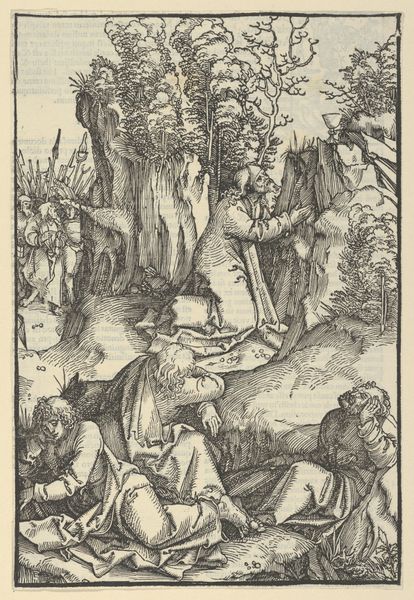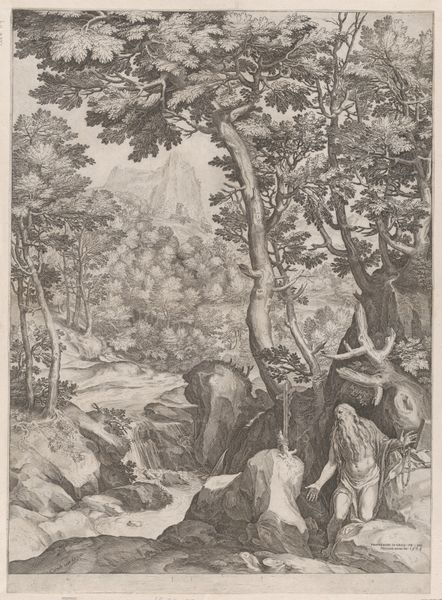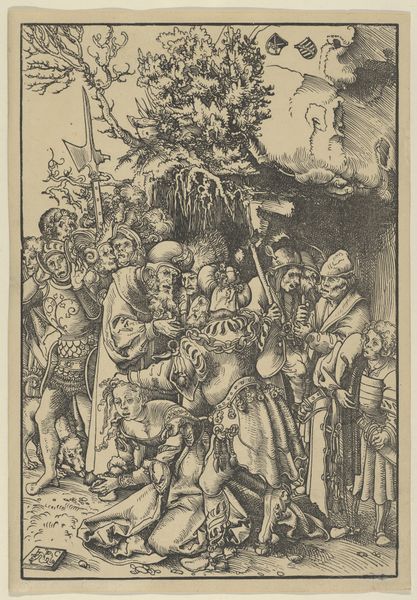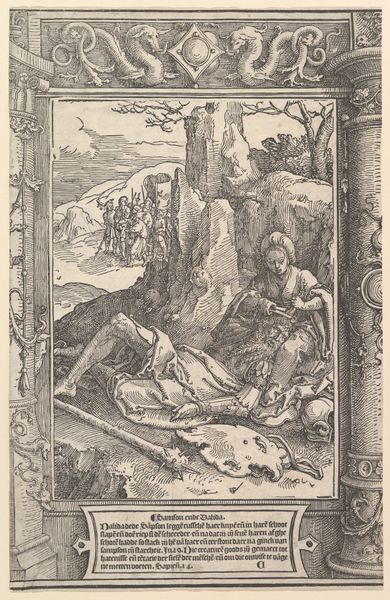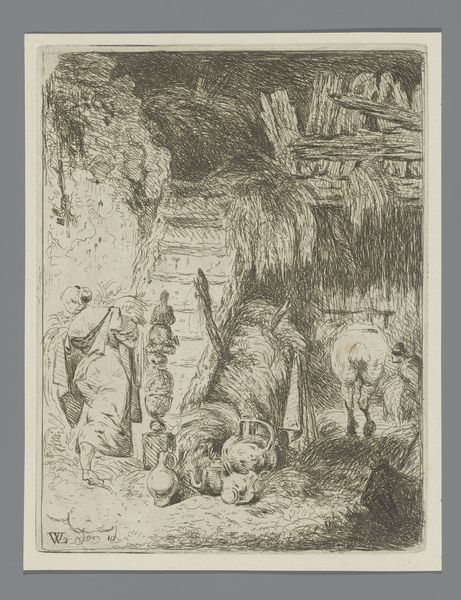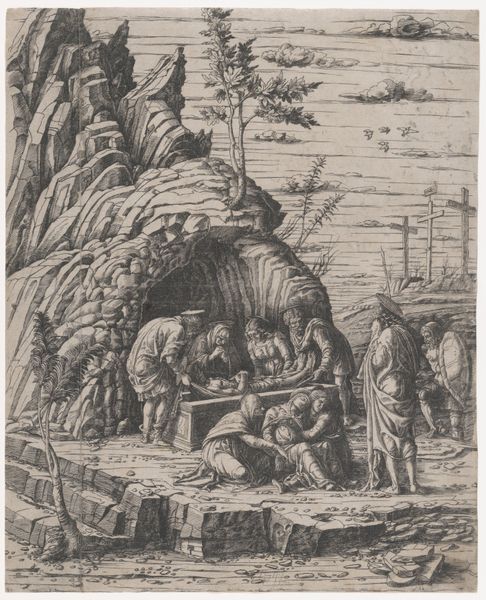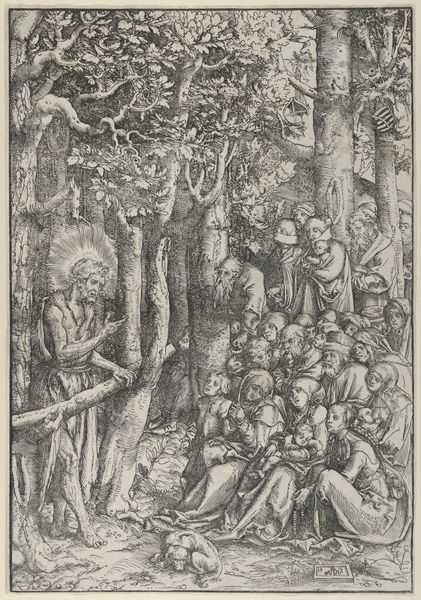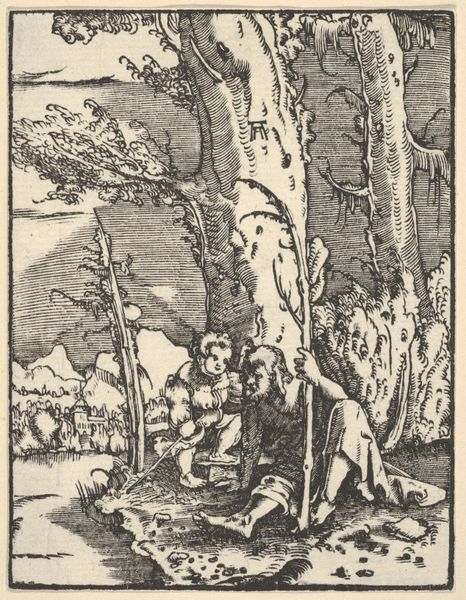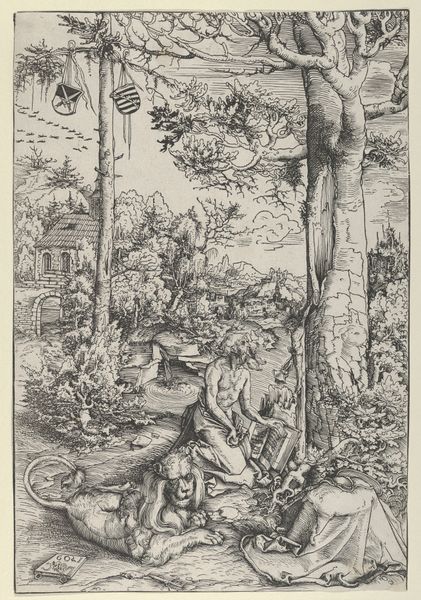
Saint Jerome in Penitence, in a Cave, from "Holzschnitte alter deutscher Meister in den Original-Platten gesammelt von Hans Albrecht von Derschau" 1810
0:00
0:00
drawing, print, woodcut, engraving
#
drawing
#
animal
# print
#
landscape
#
figuration
#
cross
#
woodcut
#
line
#
history-painting
#
northern-renaissance
#
engraving
#
realism
Dimensions: Sheet: 7 5/16 × 5 9/16 in. (18.5 × 14.1 cm)
Copyright: Public Domain
Curator: This print is entitled "Saint Jerome in Penitence, in a Cave," extracted from a collection of woodcuts from old German masters, assembled by Hans Albrecht von Derschau around 1810. Editor: It’s undeniably gloomy. The lines are so densely packed it almost suffocates the composition. Look at that heavy reliance on hatching to convey depth; it practically swallows Saint Jerome. Curator: Consider the northern Renaissance aesthetic prevalent in this work. The artist pays close attention to texture, particularly in rendering the rock formations of the cave and the saint's garments. Each line, each stroke, works to simulate a tangible roughness. Editor: I see a man trying to find peace amid external chaos. Note how the rugged cave almost imprisons Saint Jerome rather than shelters him. One has to wonder, why render such a confined, unforgiving space as a sanctuary? It’s as though he equated faith with enduring harshness. Curator: Indeed, but let’s note how light is depicted in the print, filtered, directed – there is a sense of selective focus through tonal control. These stark chiaroscuro contrasts further accentuate both the psychological drama of Saint Jerome’s penitence and formal characteristics of the artwork. Editor: It's a harsh depiction of religious devotion that mirrors an increasingly turbulent epoch within the Church’s authority – think reformation movements, philosophical reassessments – which makes one examine the function of sacrifice as both personal and performative. Curator: Yes, and how the artist utilizes the formal qualities, those dense lines and tonal contrasts, contributes meaningfully to that pervasive sense of struggle. Editor: Ultimately, this isn't simply a display of craftsmanship, but an exercise in encoding tension, using line and form to echo larger historical anxieties. Curator: Precisely, a poignant visual encoding achieved through mastery over materials and composition.
Comments
No comments
Be the first to comment and join the conversation on the ultimate creative platform.

